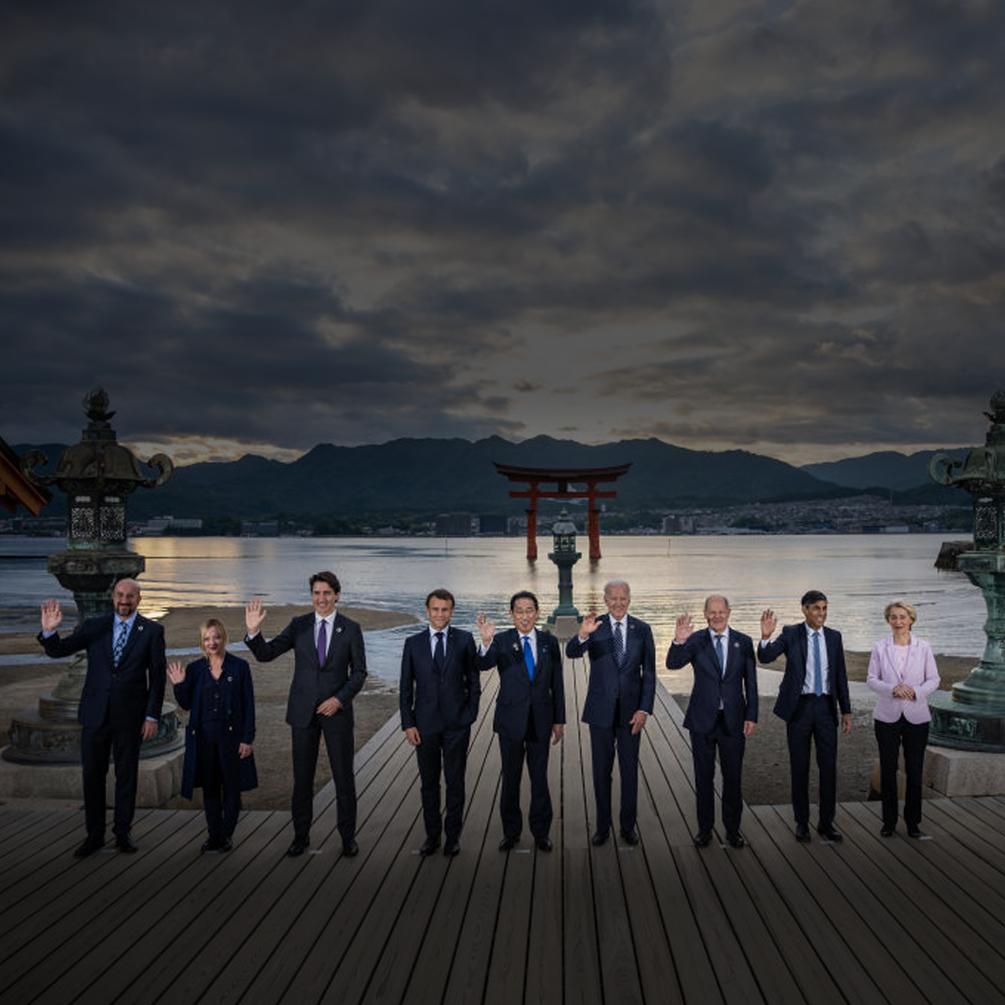The 49th Group of Seven (G7) summit took place this past weekend in Hiroshima, Japan, from 19-21 May. Leaders from Canada, France, Germany, Italy, Japan, the United Kingdom, and the United States gathered to discuss and coordinate their global strategies, with China and Russia at the top of the agenda.
The summit took place at the very site where, on 6 August 1945, the US dropped a nuclear bomb, killing approximately 70,000 people instantly (the death toll rose to roughly 140,000 by the end of the year). That horrific act of violence – intended to send a warning to the Soviet Union – ushered in the Cold War; it is a disturbing historical parallel that, 78 years later, the US and its allies returned to Hiroshima to ramp up a New Cold War against China and Russia.
At the summit, the G7 leaders prepared a ‘unified response’ against what they term China’s ‘economic coercion’, unveiling a new ‘Coordination Platform’ to this end. This initiative is the latest step in a years-long diplomatic campaign by the Biden administration to pressure its allies to support its tech war against China, in which the US has enacted numerous trade and investment restrictions seeking to ‘kneecap’ China’s advanced technological industries. This year, both US Senator Bob Menendez, Democratic Party chairperson of the Senate Foreign Relations Committee, and former UK Prime Minister Liz Truss have called for the formation of an ‘economic NATO’ and coordinated sanctions against China.
For the United States to talk of ‘economic coercion’ when it has, by far, the most extensive track record of imposing unilateral economic sanctions and coercive measures against other countries – including the six decades-long blockade against Cuba – is a most astonishing display of hypocrisy.
Meanwhile, the G7 leaders declared that they would tighten sanctions against Russia and continue to ‘support Ukraine for as long as it takes’. With Ukraine’s President Volodymyr Zelenskyy in attendance, US President Joe Biden pledged an additional $375 million in additional military aid to the country – on top of the $37 billion that the US has already provided since the start of the war – and also gave permission to G7 members to send their stocks of US-made F-16 fighter jets to Ukraine.
It is disappointing that the G7 leaders did not use this opportunity to put forward any serious proposals to resolve the war in Ukraine and establish a lasting peace, but rather doubled down on their commitment to prolong the conflict. While the G7 attempted to court the Global South by inviting leaders from countries such as Brazil, India, and Indonesia, the perspective of developing countries on the conflict was not taken seriously at the summit. In fact, Brazilian President Luiz Inácio Lula da Silva, an outspoken advocate for dialogue and a peaceful resolution of the war, was snubbed by Zelenskyy despite making repeated efforts to meet.
Instead, the United States and its allies appear intent on provoking another major power conflict – with China. As part of its broader efforts to militarise the Asia-Pacific, in the lead-up to the G7 summit, it was widely reported that the North Atlantic Treaty Organisation (NATO) is planning to open a ‘liaison office’ in Japan, the first of its kind in the region.
The G7 leaders should use their experience in Hiroshima to reflect on the immense human cost of the first Cold War and abandon their efforts to revive such conflicts today. The world needs solutions to address the urgent crises of climate change, poverty, hunger, and development, not divisive political agendas that push humanity down the path of war and destruction.
